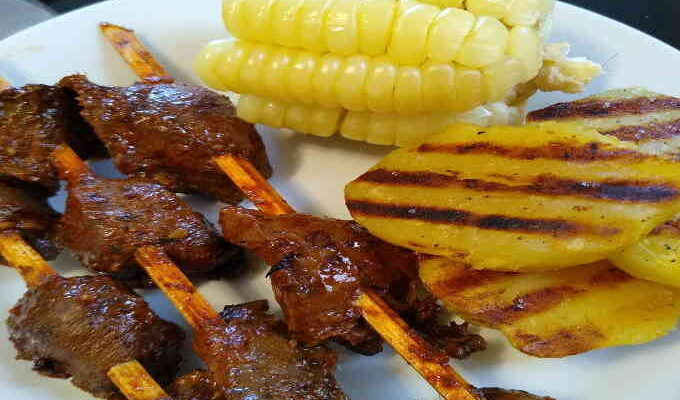Peru is not just known for its ancient ruins, majestic landscapes, and rich history—it’s also renowned worldwide for its vibrant and diverse cuisine. In fact, in 2024, Peru was named the “Leading Culinary Destination in South America” at the prestigious World Travel Awards. This recognition is a testament to the nation’s unique blend of indigenous ingredients and culinary techniques that fuse the past and the present. For travelers who seek a deeper connection to Peru’s culture, gastronomic tourism is the perfect avenue to explore the country’s rich heritage through its food. The cities of Lima, Arequipa, and Piura are at the forefront of this culinary adventure, offering flavors that encapsulate Peru’s diverse regions.
Peru’s Culinary Landscape: A Fusion of Cultures and Flavors
Peru’s culinary tradition is as vast and varied as its landscapes. From the Pacific Coast to the Andean highlands and the lush Amazonian jungle, Peru offers a diverse array of flavors and ingredients, many of which are unique to the country. This gastronomic diversity is rooted in Peru’s history, a fusion of Indigenous, Spanish, African, Chinese, and Japanese influences that have come together over centuries to create dishes that are now celebrated on the global stage.
It’s no surprise that, according to Promperú, approximately 300,000 tourists visited the country last year specifically to indulge in its renowned cuisine. Whether it’s the tangy bite of ceviche, the savory stir-fry of lomo saltado, or the spicy richness of rocoto relleno, Peru offers something for every food lover.
Let’s dive into the top three cities that have positioned themselves as the culinary heart of Peru: Lima, Arequipa, and Piura.
Lima: The Culinary Capital of Peru
Lima, the bustling capital of Peru, is the epicenter of Peruvian gastronomy and is often considered one of the top culinary cities in the world. As a melting pot of cultures, Lima combines traditional Peruvian ingredients with international flavors, particularly Asian influences, due to the country’s strong ties with China and Japan.
The most iconic dish from Lima is lomo saltado, a classic example of the blend of Peruvian and Asian flavors. This stir-fry dish consists of juicy strips of beef, seasoned with soy sauce and stir-fried with yellow Peruvian chili, onions, and tomatoes, served with crispy French fries and a side of rice. It’s a perfect representation of how Peru’s cuisine marries the best of both worlds—traditional ingredients with modern techniques.
Another must-try dish in Lima is the causa limeña, made from mashed yellow potatoes that are layered with fillings such as tuna, chicken, or seafood. The dish is served cold, making it a refreshing choice in Lima’s warm coastal climate. For a true taste of Lima’s street food, visitors should also sample anticuchos—grilled beef heart skewers that are marinated in spices and served with boiled potatoes. This dish originated in the Andes but has become a popular street snack in Lima.
Lima’s role as a culinary hub is further underscored by its international airport, which sees an influx of tourists eager to explore Peru’s food scene. According to SKY Airline’s first half-year report, they transported nearly 500,000 passengers on international routes to and from Lima alone, making it the gateway for many visitors seeking a taste of Peru.
With its vibrant food markets, high-end restaurants, and hidden culinary gems, Lima is a must-visit for any gastronomic traveler.
Arequipa: The City of Spices and Tradition
Next on the list is Arequipa, also known as the “White City” due to its stunning colonial architecture made from white volcanic stone. This city is not only famous for its historical significance but also for its rich, spicy, and flavorful cuisine, which has its roots in the traditional picanterías—local eateries that serve hearty meals full of flavor.
The star of Arequipa’s culinary scene is the rocoto relleno, a dish that captures the essence of Arequipa’s bold flavors. Rocoto relleno is a spicy bell pepper stuffed with a mixture of ground meat, cheese, and spices, and then baked to perfection. This dish showcases the region’s love for spices and hearty ingredients.
Another dish that should not be missed is the chupe de camarones, a rich and creamy shrimp soup that blends indigenous ingredients like Peruvian shrimp with European influences. The soup is made with potatoes, eggs, and milk, resulting in a hearty and flavorful meal that’s perfect for Arequipa’s cooler climate.
Ocopa is another beloved dish from Arequipa, made with boiled potatoes covered in a creamy, spicy sauce made from Peruvian herbs, peanuts, and aji amarillo (yellow chili). Often served as an appetizer, ocopa is a testament to the region’s love for strong, distinctive flavors.
According to SKY Airline, Arequipa is the second most popular city in Peru in terms of passenger traffic, with over 170,000 travelers in the first half of this year alone. This is no surprise given Arequipa’s stunning landscapes, historical sites, and, of course, its remarkable culinary offerings. SKY also offers up to six flights a day between Arequipa and Lima, making it easier than ever for travelers to explore the White City’s culinary treasures.
Piura: Coastal Flavors and Fresh Seafood
Last but certainly not least is Piura, a coastal city in northern Peru that is known for its beautiful beaches, relaxed atmosphere, and—most importantly—its incredible seafood. Piura is the birthplace of ceviche, Peru’s most iconic dish. While ceviche is available throughout the country, the ceviche in Piura is said to be the freshest and most authentic, thanks to the abundance of locally caught fish.
Ceviche consists of raw fish marinated in lime juice, which “cooks” the fish through the acidity of the citrus. It’s then mixed with onions, cilantro, and spicy Peruvian peppers, creating a refreshing and zesty dish that perfectly complements Piura’s warm climate.
Aside from ceviche, Piura is also famous for sudado, a traditional fish stew made with tomatoes, onions, and local spices. This dish is typically served with rice and is a comforting option for those looking to indulge in Piura’s seafood offerings.
One of the lesser-known but equally delicious dishes from Piura is seco de chavelo, a traditional meal made with beef, plantains, and spices. The beef is marinated and cooked until tender, while the plantains add a unique sweetness to the dish, offering a perfect balance of flavors.
For a snack, visitors to Piura should try chifles, thinly sliced and fried green plantains that are a staple in the region and are often served as a side dish or enjoyed as a snack on their own.
Piura’s growing popularity as a culinary destination is evident from the numbers—over 102,000 passengers flew between Piura and Lima in the first half of the year, making it a key stop for both domestic and international tourists. SKY offers two daily flights to Piura, with prices starting at $34, making it a convenient and affordable destination for food lovers.
Conclusion: Peru’s Culinary Landscape Awaits
From Lima’s bustling food markets to Arequipa’s spicy delights and Piura’s coastal seafood treasures, Peru is a paradise for those who travel with their taste buds. The country’s culinary scene is as diverse as its landscapes, offering a wide range of dishes that reflect its rich history and cultural fusion.
Recognized as the “Leading Culinary Destination in South America” in 2024, Peru continues to attract food enthusiasts from all corners of the globe. With convenient flight options provided by airlines like SKY, travelers can easily explore these three incredible cities—Lima, Arequipa, and Piura—and embark on a gastronomic journey that they will never forget.
Whether you’re seeking the perfect ceviche, craving the bold flavors of rocoto relleno, or longing for the comforting taste of lomo saltado, Peru has something to offer every food lover. The country’s unique combination of indigenous ingredients, culinary traditions, and modern techniques has created a food culture that is both deeply rooted in history and innovative in its execution.
For those looking to indulge in one of the world’s most exciting culinary destinations, Peru’s diverse and vibrant food scene is ready to welcome you with open arms—and full plates.



